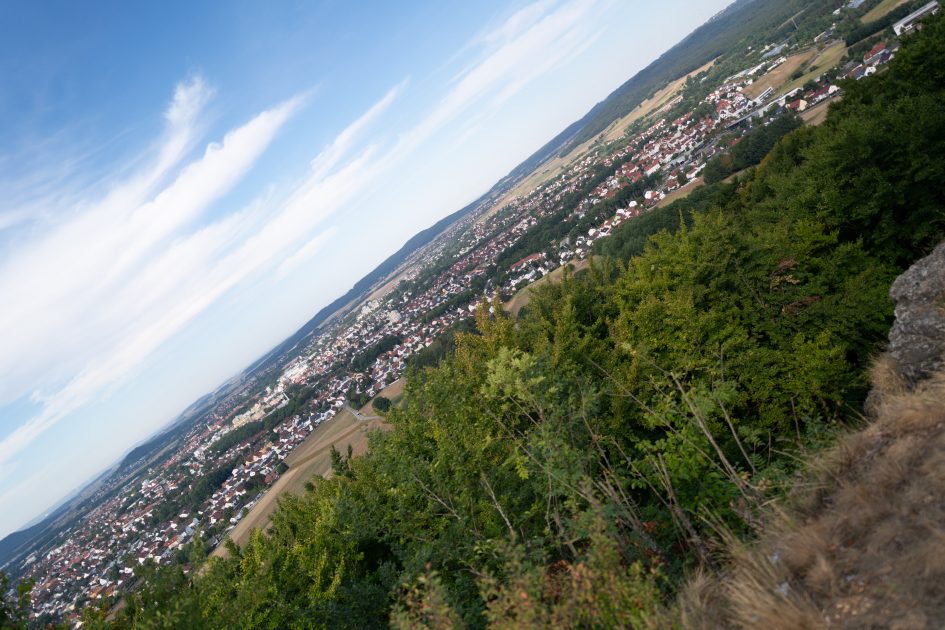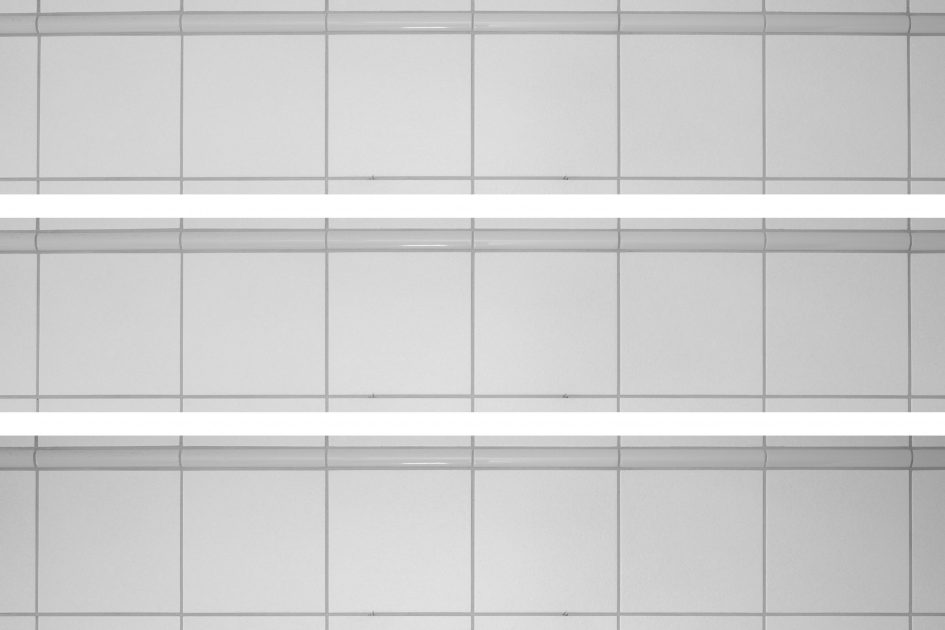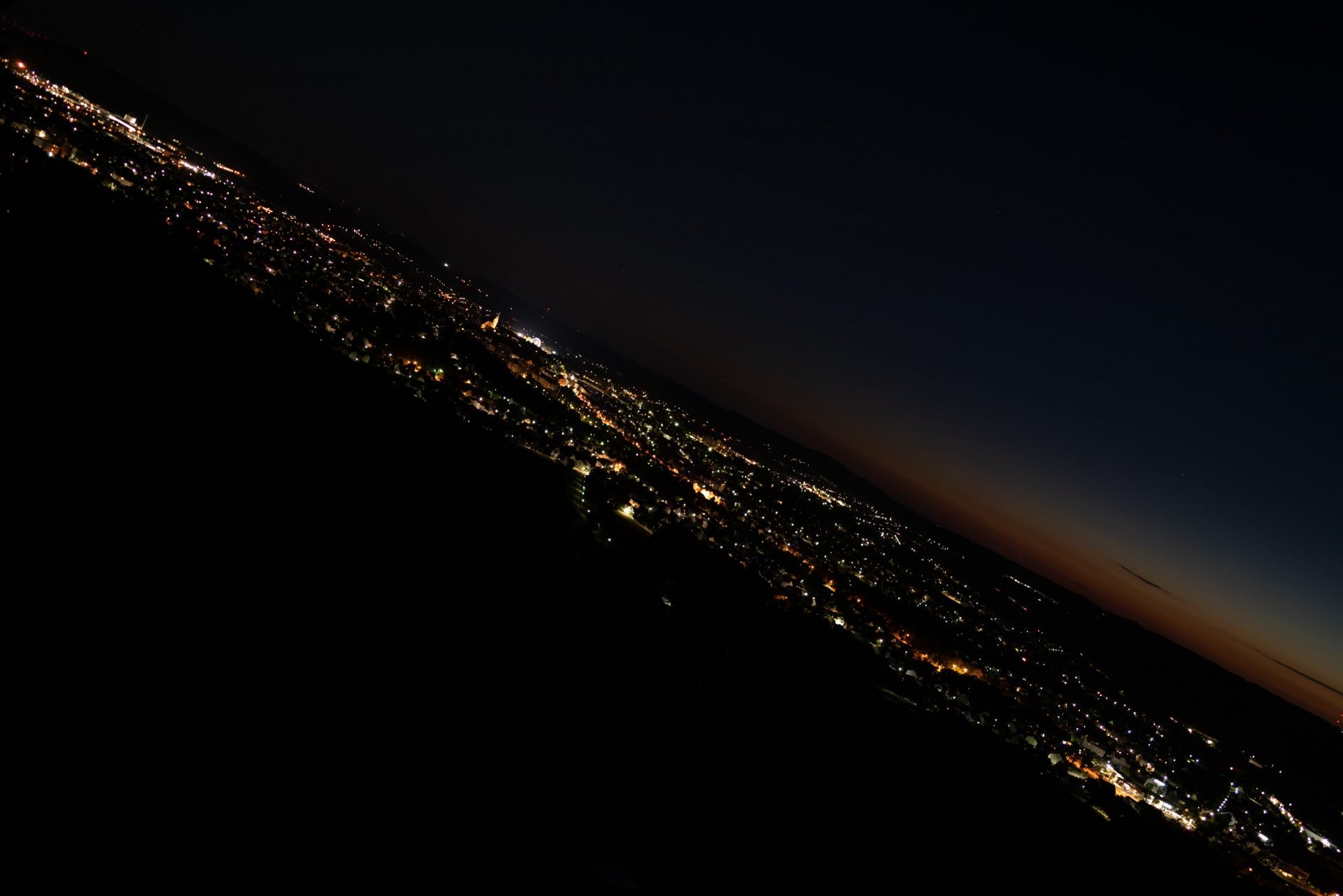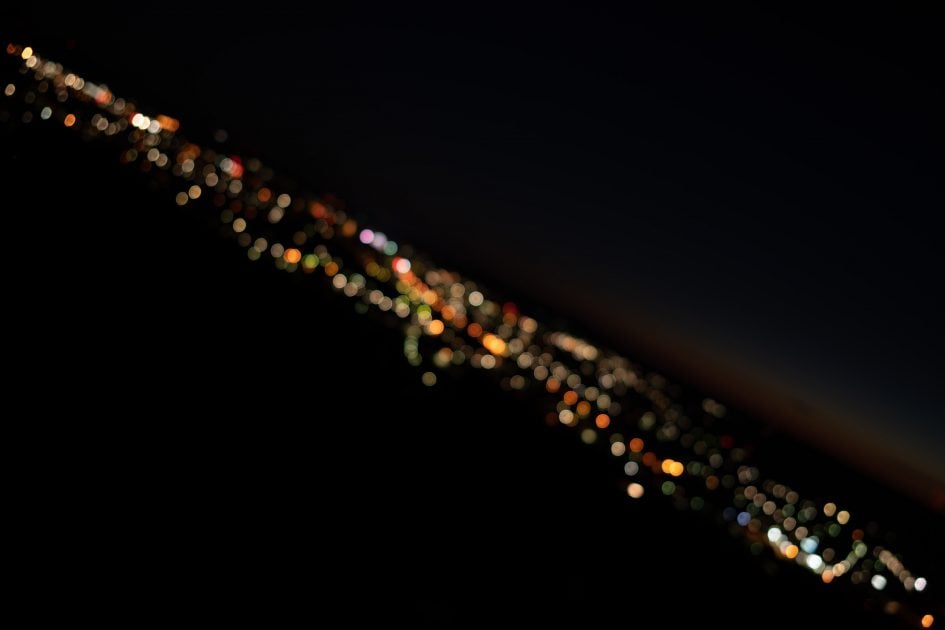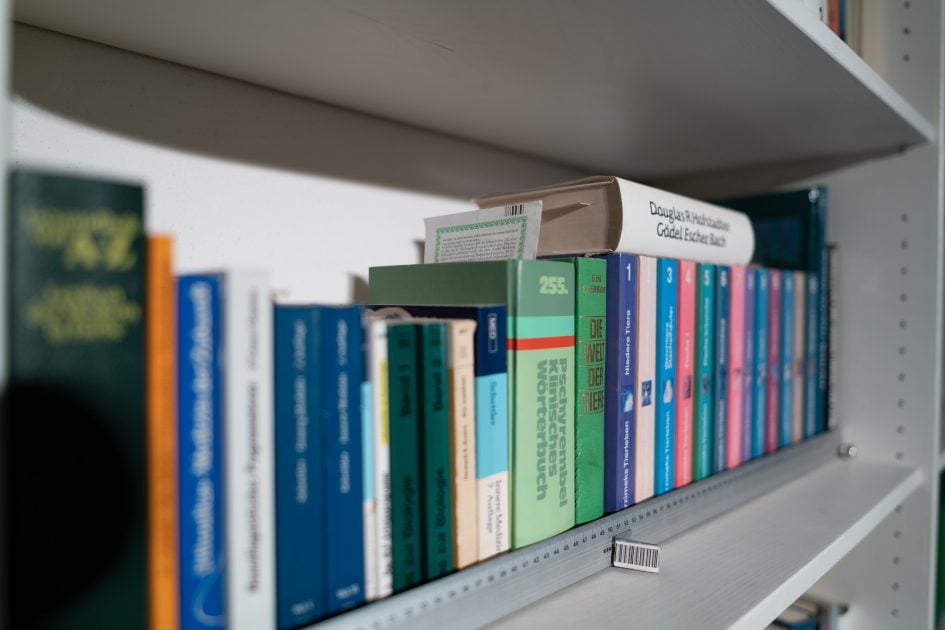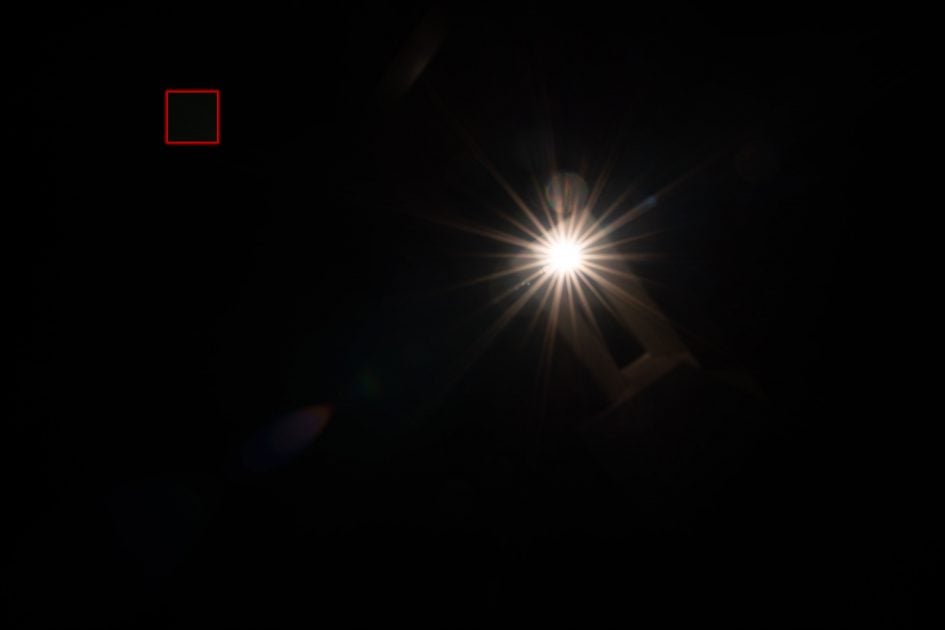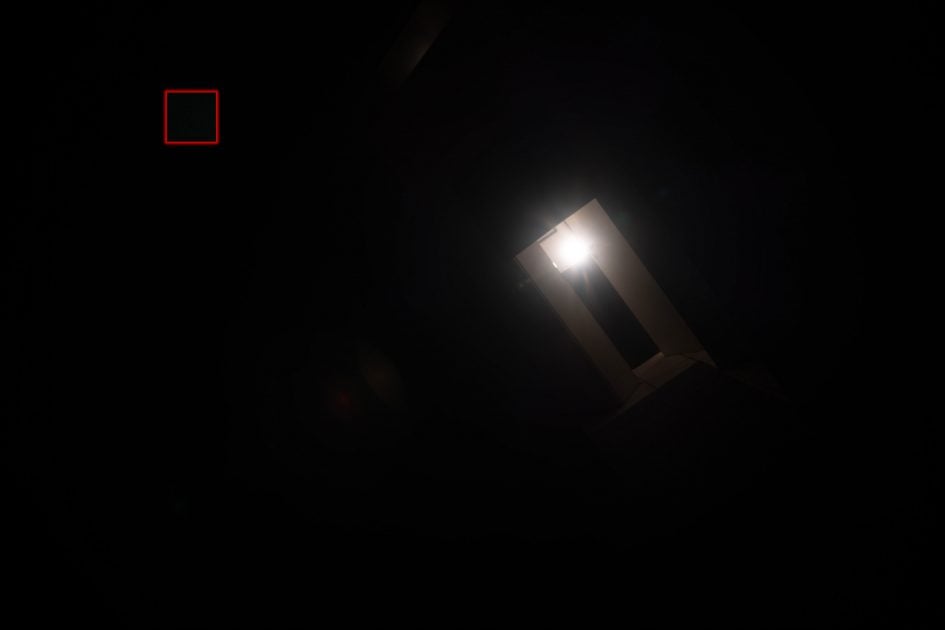Sigma 24mm f1.4 DG DN Art review
-
-
Written by Thomas
Quality
Longitudinal Chromatic Aberration and focus shift
Lenses with focal ratios of f2.8 or larger are often prone to longitudinal color aberrations (loCA, a.k.a. “axial color” or “bokeh CA”). These show up as magenta coloration in the foreground and greenish hues in the background and are not easily corrected in post-processing. The Sigma clearly shows loCA wide open and at f2.0 but the effect is not as strong as from the Sony FE 24mm f1.4 GM.
Sigma 24mm f1.4 DG DN Art Longitudinal Chromatic Aberration (loCA)
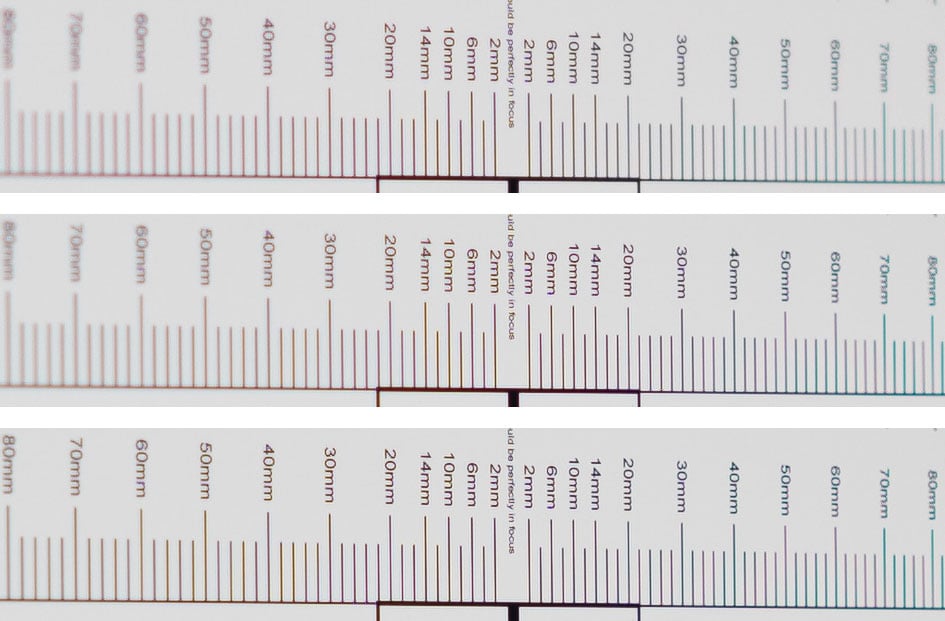
100% crops, from top to bottom: f1.4, f2.0, f2.8; left = foreground, right = background
When stopping down the background become sharper faster than the foreground but I couldn’t detect focus shift.
The following real life shot under harsh contra-light conditions shows that the Sigma also produces some purple fringing around high-contrast edges in the focus plane and some spill-over from the extra-bright background into the subjects:
Above: Sigma 24mm f1.4 DG DN Art at f1.4; 100% crop; click image to access 4k version, here for large original
The second image on the samples page of the fountain backlit by the sun also shows some coloration in the air bubbles.
Sharpness and contrast
Let’s have a look at the theoretical performance of the Sigma 24mm f1.4 DG DN Art and compare it to the performance of the Sony FE 24mm f1.4 GM, Viltrox AF 24mm f1.8, and Sigma 20mm f1.4 DG DN Art:
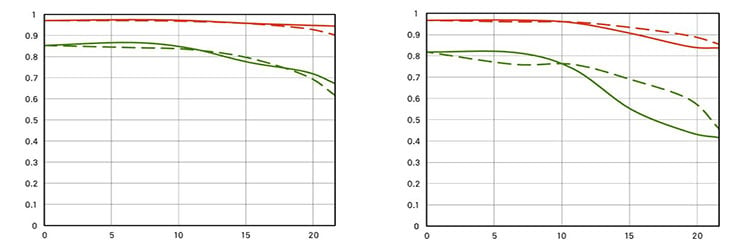
Above: Sigma 20mm f1.4 DG DN Art, Sigma 24mm f1.4 DG DN Art (both at f1.4)
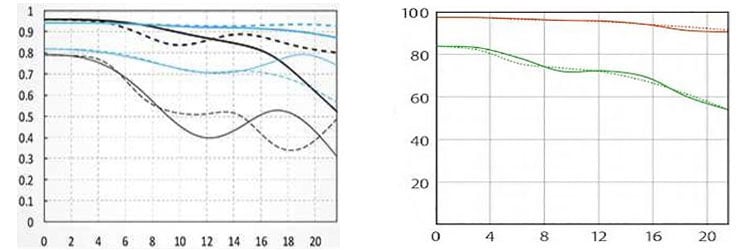
Above: Viltrox AF 24mm f1.8 (black=f1.8), Sony FE 24mm f1.4 GM (at f1.4)
I’ve also added the 24mm f2.0 lens from Sigma’s Contemporary line and Sigma’s older 24mm f1.4 DSLR design:
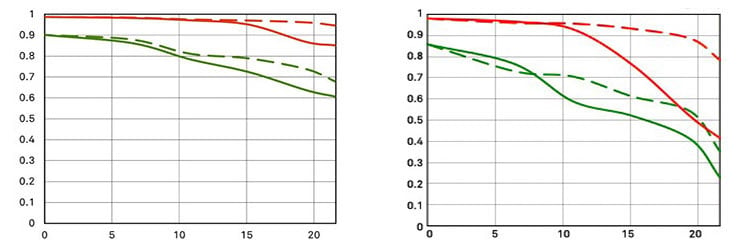
Above: Sigma 24mm f2 DG DN (at f2.0), Sigma 24mm f1.4 DG HSM Art (at f1.4)
The MTF charts show the computed contrast-curves at 10 line-pairs/mm (red) and 30 lp/mm (green) without influence of diffraction. Higher values are better (more contrast) and the closer the dotted and solid lines are together the less contrast dependents on the orientation of the test-pattern (less astigmatism). The x-axis displays the distance from the optical axis (=center of the sensor) in mm. I’ll show you the real-life performance at 4 mm (“center”), 13 mm (APS-C-corner), and 20 mm (FF-corner) on a 42MP Sony A7R II body.
From the charts the Sigma 24mm f1.4 DG DN Art should be better than the Viltrox and the older Sigma 24mm f1.4 DG HSM Art albeit not as sharp as the Sigma 20mm f1.4 DG DN Art. The Sony FE 24mm f1.4 GM and Sigma 24mm f2 DG DN also look sharper – but then the latter is at f2.0 which does not make it a fair comparison.
Let’s see how this theoretical performance of the Sigma translates into real life results in the sharpness test based on Siemens-stars. Processing was done in Lightroom 11.4.1/CRAW 14.4.1 from RAW to Adobe Color profile with CA compensation applied. Noise-reduction is set to 0, sharpening to 50/0.5/36/10, with no extra tone, color, or saturation adjustment. White-balance was adjusted to a neutral white and I did some exposure compensation to make the brightness of all crops match. So you will not see light fall-off in the corners.
The following 100% crops show the Sigma 24mm f1.4 DG DN Art from f1.4 down to f11 compared to the Sony FE 24mm f1.4 GM and Sigma 20mm f1.4 DG DN Art at f1.4 and Viltrox AF 24mm f1.8 (shot on a Nikon Z7) at f1.8. With linear resolution of the 45MP Z7 sensor only 4% higher than from the 42MP A7R II, identical test set-up and identical RAW processing the comparability between the test-shots should be very good.
Sigma 24mm f1.4 DG DN Art compared; 100% crop from center, APS-C-corner, FF-corner

Above: Sigma 24mm f1.4 DG DN Art at f1.4

Above: Sony FE 24mm f1.4 GM at f1.4

Above: Sigma 20mm f1.4 DG DN Art at f1.4

Above: Sigma 24mm f1.4 DG DN Art at f1.7

Above: Viltrox AF 24mm f1.8 shot on Nikon Z7 at f1.8

Above: Sigma 24mm f1.4 DG DN Art at f2.0

Above: Sigma 24mm f1.4 DG DN Art at f2.8

Above: Sigma 24mm f1.4 DG DN Art at f4.0

Above: Sigma 24mm f1.4 DG DN Art at f5.6; also available at f8.0, f11
The center of the Sigma 24mm f1.4 DG DN Art looks quite sharp even at f1.4 but the APS-C- and FF-corner are softer than from the Sony FE 24mm f1.4 GM and Sigma 20mm f1.4 DG DN Art. Stopping down to f1.7 or f2.0 sharpens the lens up a bit but it does not look distinctly better than the Viltrox. Stopping the lens further down to f5.6 finally produces good FF-corners. At the testing distance the 24mm f1.4 DG DN Art shows some field-curvature at the APS-C-corner which swings back in the FF-corner.
Performance at long distances
The Siemens-star test-targets above were shot at a distance of 45x focal length (i.e. at around 1.1m for 24mm focal length). But performance of lenses also depends on the shooting distance. Therefore I did another series of test-shots of a city around 1 km away. Processing was done in Lightroom 11.4.1/CRAW 14.4.1 from RAW to Adobe Color profile with the Sigma supplied lens-profile reducing distortions and light fall-off which results in a slight overcompensation of vignetting. CA-removal is On, Noise-reduction set to 0, sharpening to 50/0.5/36/10, with no extra tone, color, or saturation adjustment. I used manual focus at the largest aperture and did not change focus for other apertures. All shots were made at base ISO and image stabilization switched off.
The following image shows the complete scene wide open to give you an impression of the angle of view. Following the main image are 100% crops from the center, APS-C-corner, and FF-corner from the Sigma 24mm f1.4 DG DN Art compared to the Sigma 20mm f1.4 DG DN Art shot only minutes apart and the Sony FE 24mm f1.4 GM and Viltrox AF 24mm f1.8 shot at different days – but with roughly comparably atmospheric conditions. As usual I chose the diagonal with the better FF-corner as almost any lens is a bit decentered.
You can access the large originals but please respect our copyright and only use those images for personal use.
Above: Sigma 24mm f1.4 DG DN Art at f1.4; click image for 4k version, here for large original
Above: Sigma 24mm f1.4 DG DN Art at f1.4; click image for 4k version, here for large original
Above: Sony FE 24mm f1.4 GM at f1.4; click image for 4k version, large original available at f1.4, f1.6, f1.7, f2.0, f2.8, f4.0, f5.6, f8.0, f11
Above: Sigma 20mm f1.4 DG DN Art at f1.4; click image for 4k version, here for large original

Above: Sigma 24mm f1.4 DG DN Art at f2.0

Above: Viltrox AF 24mm f1.8 shot on Nikon Z7 at f2.0; 100% crops also available at f1.8, f2.8, f4.0, f5.6, f8.0, f11

Above: Sigma 24mm f1.4 DG DN Art at f2.8

Above: Sigma 24mm f1.4 DG DN Art at f4.0

Above: Sigma 24mm f1.4 DG DN Art at f5.6; also available at f8.0
Wide open the Sigma 24mm f1.4 DG DN Art shows very good sharpness in the center but gets softer towards the corners. The Sony FE 24mm f1.4 GM and Sigma 20mm f1.4 DG DN Art are clearly better in this respect. Stopping down to f2.0 lifts acuity visibly in the APS-C-corner making it clearly sharper there than the Viltrox. Stopping the Sigma 24mm f1.4 DG DN Art further down to f4.0 leads to very good sharpness across the full frame.
Vignetting and distortions
To make it easier to see light fall-off in the corners of a full-frame sensor I’ve arranged a series of shots with the Sigma 24mm f1.4 DG DN Art at different apertures. All images were shot as JPGs and developed to the same brightness in the center.
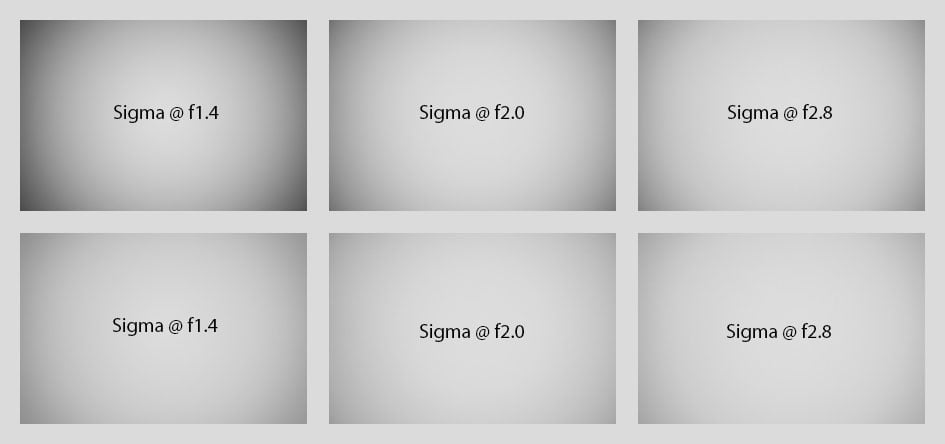
Above: Sigma 24mm f1.4 DG DN Art with shading compensation Off (top) or Auto (bottom) at f1.4, f2.0, f2.8
The sample images above show that with shading compensation on Auto the extreme corners are lifted about 1.1 EV at f1.4 which makes vignetting of the Sigma pretty inconspicuous. Adobe’s RAW converter automatically applies shading compensation as it was set in camera – but you cannot alter the setting in postprocessing. Btw: If you have shading compensation on Auto and apply the lens profile supplied by Adobe you might be overcompensating. In this case reduce the amount of vignetting correction from Adobe’s lens profile.
Regarding distortions: Adobe’s RAW converter ignores what was set in camera and always corrects them. Looking at JPGs with distortion compensation Off the lens has some barrel-distortions with a slight mustachio effect at a shooting distance of around 1m
Distortions of Sigma 24mm f1.4 DG DN Art: JPG with distortion compensation Off (top), RAW with lens-profile from CRAW (middle), JPG with distortion compensation On (bottom)
The lens profile from CRAW does not fully correct the distortions in RAW files but JPGs out of camera are well corrected. This might be due to the pre-release status of the lens’s firmware or a bug in the Adobe lens profile. Distortions also depend on the shooting distance: The closer you focus the more extreme the barrel distortions become. Even pushing compensation to 200% does not nearly get rid of them at minimum object distance. The Sony FE 24mm f1.4 GM is much better corrected in close-up shooting.
Rendering of point-light sources at night-shots
Night-shots pose a different challenge for lenses as the contrast is even higher than under bright sun and point-light sources can reveal some weaknesses such as coma, haloing and colour-aberrations that do not show up as prominently in other test-shots. The 100% crops below the main image show the effect of coma in the FF-corner of the Sigma at various apertures:
Above: Sigma 24mm f1.4 DG DN Art at f1.4; click image for 4k version, here for large original

Above: Sigma 24mm f1.4 DG DN Art; 100% crops from the FF-corner at f1.4 (left), f2.0 (middle), f2.8 (right)
The Sigma 24mm f1.4 DG DN Art shows a bit of coma at f1.4 and f2.0 – stronger than from the Sony FE 24mm f1.4 GM or Sigma 20mm f1.4 DG DN Art. Looking at the large original there’s a bit of green haloing around street lights at f1.4. But the effect is minimal and completely gone at f2.0. And if you want to know how this translates into shooting the starry sky have a look at the last sample image of Ursa Major on the next page.
Bokeh quality
This test is for the rendering of point-light sources in an out-of-focus background. The circle of confusion that is produced by this test is pretty indicative of Bokeh performance (in the background) and light fall-off. Ideally the out-of-focus image of the point-light is evenly lit and perfectly circular, with no “onion-rings”, and without coloration. Large aperture lenses normally produce an effect known as “cat’s eye” the further away from the optical axis the point-light is projected. This is due to optical vignetting in the lens barrel when light enters the lens from an angle.
The crops below the main image are from the center, APS-C-corner, and FF-corner of the 4k version.
Above: Sigma 24mm f1.4 DG DN Art at f1.4; click image for 4k version
Above: Sigma 24mm f1.4 DG DN Art at f1.4; click image for 100% crops
Above: Sigma 24mm f1.4 DG DN Art at f2.0; click image for 100% crops
Above: Sigma 24mm f1.4 DG DN Art at f2.8; click image for 100% crops
Above: Sigma 24mm f1.4 DG DN Art at f4.0; click image for 100% crops
The diameter of the Bokeh balls in the center is determined by the entrance pupil of the lens which is only 17mm on any 24mm f1.4 lens and 13mm on the Viltrox AF 24mm f1.8 wide open. So Bokeh balls are always disappointingly small on (ultra-)wide angle lenses – unless you focus very close. But the “beauty” of the balls is still important. The Sigma 24mm f1.4 DG DN Art shows some outlining with a slight green tint but the inside of the disk is smoothly textured with no onion rings. In that respect it is better than the Sony FE 24mm f1.4 GM which shows stronger green outlining and also better than the Sigma 20mm f1.4 DG DN Art which shows one additional ring inside the disk at f1.4. The least attractive Bokeh balls come from the Viltrox with strong onion rings on specular highlights. Compression of the circle towards the corners of the Sigma 24mm f1.4 DG DN Art is not very pronounced although the effect already starts in the APS-C-corner at f1.4. But at f2.8 or f4.0 compression becomes minimal. The aperture blades of the Sigma are well-rounded up until f5.6.
Now let’s see how this analysis of out-of-focus point-light sources translates into Bokeh-performance shooting a book-shelf. The crops of the foreground, the middle-ground, and the background below the main image are resized to make them comparable across all my reviews.
Above: Sigma 24mm f1.4 DG DN Art at f1.4; click image for 4k version, here for large original
Above: Sigma 24mm f1.4 DG DN Art at f1.4; click image for 4k version, here for large original
Above: Sony FE 24mm f1.4 GM at f1.4; click image for 4k version, here for large original
Above: Sigma 20mm f1.4 DG DN Art at f1.4; click image for 4k version, here for large original
Above: Viltrox AF 24mm f1.8 shot on Nikon Z7 at f1.8; click image for 4k version, here for large original
The Sony loses in this comparison to both Sigmas – although to be fair the scene was shot at a slightly different angle. Comparing both Sigmas the 24mm has the softer transition zone albeit with a slightly stronger green cast from loCA. But the foreground and background of both Sigmas look very similar. The Viltrox is not bad but hampered a bit in this comparison by its slower f1.8 focal ratio.
Below is another crop (now at 100%) from the same images showing the ruler. Both Sigma lenses again look pretty similar in the transition zone near the plane of focus with little hinting at double contours. Looking at the large originals there’s probably a higher risk of artifacts in the foreground. The Sony is pretty smooth in the transition zone but the Viltrox hints at double contours which indeed mar its background Bokeh in real-life shots.
Above: Sigma 24mm f1.4 DG DN Art at f1.4; click image for 4k version, here for large original

Above: Sony FE 24mm f1.4 GM at f1.4; click image for 4k version, here for large original
Above: Sigma 20mm f1.4 DG DN Art at f1.4; click image for 4k version, here for large original

Above: Viltrox AF 24mm f1.8 shot on Nikon Z7 at f1.8; click image for 4k version, here for large original
Close-up performance
The following shots were taken with the Sigma 24mm f1.4 DG DN Art at its maximum magnification of 1:5.7. The crops shown below are from 0mm, 11mm, and 18mm off the center of the sensor respectively, the area of sharp focus is 137 x 205mm. As field curvature was quite strong I focused separately for the center crop and the crop of the eye.
Sigma 24mm f1.4 DG DN Art, 1:5.7 magnification; 100% crops

Above: Sigma 24mm f1.4 DG DN Art at f1.4

Above: Sigma 24mm f1.4 DG DN Art at f4.0

Above: Sigma 24mm f1.4 DG DN Art at f8.0
While the center is already pretty sharp at f1.4 the Sigma 24mm f1.4 DG DN Art needs stopping down to f8.0 to render sharp details across the full frame and significantly reduce the effect of field curvature.
Flare, glare, ghosting, and sunstars
Catching a strong light-source shining directly into the lens is always a risky business: it could produce strange colorful ghost-images or reduce contrast considerably through flare and glare. The appearance of flare and ghosting depends on factors like the aperture and the angle of the light hitting the lens. So to judge the proclivity of the Sigma 24mm f1.4 DG DN Art for these artifacts I went through a series of well calculated shots against a strong light source to provoke glare and ghosting. The lens hood was mounted in all shots. Following are two of the more extreme example results. The little bright square inset in the upper left shows the respective area with an exposure compensation of +3 EV to make it easier to see which levels of black the lens renders at that point:
Above: Sigma 24mm f1.4 DG DN Art at f11; click image for 4k version or here for +3 EV exposure compensation
Above: Sigma 24mm f1.4 DG DN Art at f1.4 click image for 4k version or here for +3 EV exposure compensation
The Sigma is very clear of flare and ghosting artefacts. And outside these artefacts the lens renders a very deep black, so there’s little veiling glare. The lens also does not produce the typical flare which other lenses show when the light-source is just outside the corner. All-in-all the Sigma 24mm f1.4 DG DN Art let’s you shoot confidently under adverse contra-light situations.
Sunstars of the Sigma 24mm f1.4 DG DN Art are well defined and regular – once you stop down to f11 or beyond.
Next check out my sample images!
Check prices on the Sigma 24mm f1.4 DG DN Art at B&H, Adorama, WEX UK or Calumet.de. Alternatively get yourself a copy of my In Camera book, an official Cameralabs T-shirt or mug, or treat me to a coffee! Thanks!
